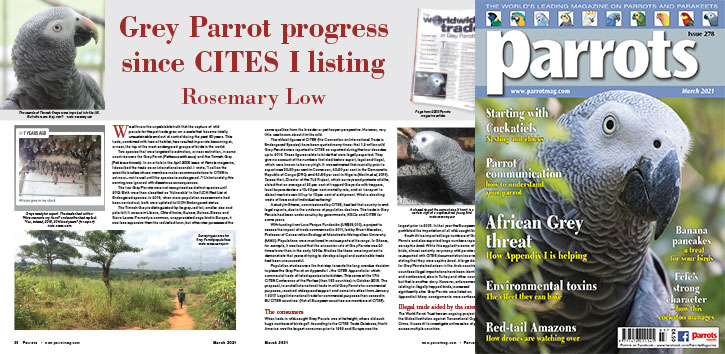
By Rosemary Low
We all know the unpalatable truth that the capture of wild parrots for the pet trade grew on a scale that became totally unsustainable and out of control during the past 50 years. This trade, combined with loss of habitat, has resulted in parrots becoming at, or near, the top of the most endangered groups of birds in the world.
Two species that were targeted to extinction, or near extinction, in some countries were the Grey Parrot (Psittacus erithacus) and the Timneh Grey (Psittacus timneh). In an article in the April 2005 issue of Parrots magazine, I described the trade as an international scandal. I wrote, “I call on the scientific bodies whose members make recommendations to CITES to act now – not to wait until the species is endangered...”. Unfortunately, this warning was ignored with disastrous consequences.
The two Grey Parrots were not recognised as distinct species until 2012. Both were then classified as ‘Vulnerable’ in the IUCN Red List of Endangered species. In 2016, when more population assessments had been carried out, both were uplisted to IUCN Endangered status.
The Timneh Grey is distinguished by its grey-red tail, smaller size and paler bill. It occurs in Liberia, Côte d’Ivoire, Guinea, Guinea-Bissau and Sierra Leone. Formerly a common, unappreciated cage bird in Europe, it was less expensive than the red-tailed form, but otherwise possessed the same qualities from the breeder or pet keeper perspective. However, very little was known about it in the wild.
